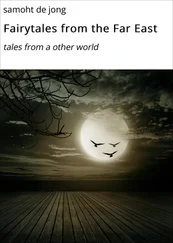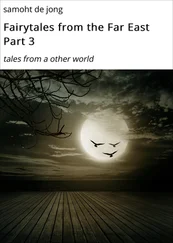George Hoyt Allen - A Yankee in the Far East
Здесь есть возможность читать онлайн «George Hoyt Allen - A Yankee in the Far East» — ознакомительный отрывок электронной книги совершенно бесплатно, а после прочтения отрывка купить полную версию. В некоторых случаях можно слушать аудио, скачать через торрент в формате fb2 и присутствует краткое содержание. Жанр: foreign_prose, foreign_antique, foreign_language, на английском языке. Описание произведения, (предисловие) а так же отзывы посетителей доступны на портале библиотеки ЛибКат.
- Название:A Yankee in the Far East
- Автор:
- Жанр:
- Год:неизвестен
- ISBN:нет данных
- Рейтинг книги:3 / 5. Голосов: 1
-
Избранное:Добавить в избранное
- Отзывы:
-
Ваша оценка:
- 60
- 1
- 2
- 3
- 4
- 5
A Yankee in the Far East: краткое содержание, описание и аннотация
Предлагаем к чтению аннотацию, описание, краткое содержание или предисловие (зависит от того, что написал сам автор книги «A Yankee in the Far East»). Если вы не нашли необходимую информацию о книге — напишите в комментариях, мы постараемся отыскать её.
A Yankee in the Far East — читать онлайн ознакомительный отрывок
Ниже представлен текст книги, разбитый по страницам. Система сохранения места последней прочитанной страницы, позволяет с удобством читать онлайн бесплатно книгу «A Yankee in the Far East», без необходимости каждый раз заново искать на чём Вы остановились. Поставьте закладку, и сможете в любой момент перейти на страницу, на которой закончили чтение.
Интервал:
Закладка:
But I feel a little sore at that Hawaiian booster. He didn't tell about the fish they have here. There is an aquarium in Naples, Italy, said to be the finest in the world. I've been through that Naples aquarium several times, and it is a drab affair compared with the aquarium here at Honolulu. In the Honolulu aquarium may be seen fish of odd shapes and so brilliantly and beautifully colored that no artist could show these colors with paint and brush. There is the Humuhumu for instance. A fish six or seven inches long. It has bright green fins, and a stripe of jet black starting in a narrow band at the top of its back, broadening out diagonally around its body. On its side, set in the band of black, is a bright red spot. Rearwards of the black band its body is a bright red, and forward of the band the body is bright red shading off to white. Its tail is striped, red, yellow and black. Somewhat bass-shaped, its eyes are not in its head, but set on top of its back.
A man not knowing such a fish existed, if he were fishing in one of our ponds in New York State, if he should pull up a Humuhumu, he would stop fishing. He certainly would. And he wouldn't stop to land it, either. Just one look at that fish and he'd yell and drop fish, line and pole right back in the pond, and hunt up the chairman of the temperance movement in his town and sign the pledge.
Then there is the Lae-Nihi. A fish about eight inches long, all blue. You can't know how bright and beautiful blue can be until you see a Lae-Nihi swimming in the water. Dozens of other odd-shaped fish, wonderfully marked in brilliant variegated patterns, are in the aquarium.
The government at Washington has made colored plates showing the shapes, markings, and giving the names of these fish, and attempting to show the colorings. Anyone looking at the colored prints and not knowing of these wonderful fish would say, "Preposterous! No such colored fish exist!" But the cold fact is, those colored prints but faintly portray the brilliant colors of the fish as they are seen in life.
With all this, you'd think they ought not to be anything but happy in Hawaii. You wouldn't expect to find kickers on the islands.
But the truth is, they are in a blue funk. They think that the islands are going to the bow-wows financially, because of the tariff legislation on sugar. I tell them to brace up and advertise the islands as more than the biggest show on earth; and, in place of begging for settlers, to pass out the word that the truly good may come, for a satisfactory consideration; and that the chances are they will have standing room only, and won't know what to do with their money.
V
THE UMPIRE WHO GOT A JOB
More and more I am convinced of the cleverness of the Japanese after a voyage across the Pacific in one of their magnificent ocean liners – a 22,000-ton ship, built at their yards at Nagasaki, Japan – built, owned, and operated by the Japanese. The officers are Americans, with the exception of the chief engineer, who is Japanese. The crew is Japanese. Dining room waiters, Chinese and Japanese; and room boys are Japanese.
The cuisine more thoroughly conforms to American tastes than that found on any other ocean liners I am acquainted with, and nothing left to be desired in quality, variety, and way of serving. All the appointments of the ship for luxurious and comfortable travel are as nearly perfect as anything can be, with absolute cleanliness emphasized at every point – a trip through the culinary department prior to sitting down to a meal adding zest to one's appetite – and that's some test. The management does everything possible for the passenger's enjoyment. Nearly every evening a moving picture entertainment is given on one of the spacious decks. The ship carries films to the Orient as an item of freight, and has the use of them en route.
A seventeen days' voyage from San Francisco to Yokohama is not long enough to exhaust the supply if an hour's exhibition were to be given every evening. The event of the voyage is the theatricals given by the ship's crew, the common sailors, who do the work of running the ship. I was not surprised to see Japanese sailors in an exhibition of ship games for the passengers' entertainment one forenoon, carrying them off creditably – games indulged in by sailors the world around: the tug-of-war, chair race, potato race, cock-fighting, etc.; but to see them put on an elaborate theatrical for an evening's entertainment filled me with wonder and admiration.
The first act on the program was a "Union Dance." In this all leading nations were represented. And next was "The Lion Dance." They say the Japanese are imitative. I would like to know which nation they imitated in producing that beast! It was an animal about fifteen feet long. It had a bushy tail that stood in the air three feet and waved continuously. Along its back was a series of short, stubby wings; and its head! Fearfully and wonderfully made was that head, which was mounted on a serpentine neck. The genius who created that head must have searched the earth, sea, and air for inspiration in his work.
And it danced!
Oh, that beast danced!
The power that moved the thing was two sailors inside, but how under the heavens they kept that tail waving, those wings working, and the eyes, ears, and tremendous jaws of that combination of earth, air, and sea monster all going at one and the same time, the while it danced, and reared, and crawled, and writhed, and gamboled, and all but flew – I would like to know how they did it. If anyone will tell me which nation they imitated to put that number on, I'll make a trip to that country – I want to see those folks. I've seen something on this order, large animals, elephants, bears, cows, etc., impersonated with man power inside, in New York, London, and Paris. They were good, too. A lot of fun. Amuse the children. But here was something good enough to – to – well, I won't say to scare a locomotive off the track, but I'll bet it would make it shy.
The next number was "Wrestling and Fencing." A half dozen pairs of contestants. Japanese wrestling is always good and needs no comment, but the actor who announced the bouts, and the umpire who started them and announced decisions, would have made a whole evening's entertainment in themselves. Adverse comments on some of that umpire's decisions, by certain Japanese passengers, brought him to the front of the stage with a little preachment. It all being in Japanese, of course I couldn't understand what he said, but there seemed to be fire and tow and ginger in that umpire's words; indeed, everything that he did savored of fire and tow and ginger.
I asked a Japanese passenger who sat next to me and who was not one of the dissenters: "What did the umpire say?" Turned into English the umpire said: "Go chase yourselves, you lobsters who are finding fault with my decisions. I'm umpiring these bouts, and my decisions go, see?" And they saw. Believe me, that umpire could make anyone see.
The commander of the ship told me that that umpire finally made him "see."
He (the umpire) is 62 years old. He asked the commander for a job, and failing to get it, he rode as a stowaway on the ship across the Pacific. He made the trip three times in that way, until finally he wore the commander out, and got his job. He is a good sailor, a star actor, and somewhat of a privileged character. I could see from the way the commander told me the story of how he got his job that he considered the umpire a good sort.
But the climax of surprises – of common sailors holding for over two hours a most critical audience, and delighting them to the last drop of the curtain – was " Cushingura ," one of Japan's classical dramas. It took a dozen or so actors to produce it. The crew, from money raised by delighted auditors, had provided splendid and appropriate costumes to dress the parts.
Читать дальшеИнтервал:
Закладка:
Похожие книги на «A Yankee in the Far East»
Представляем Вашему вниманию похожие книги на «A Yankee in the Far East» списком для выбора. Мы отобрали схожую по названию и смыслу литературу в надежде предоставить читателям больше вариантов отыскать новые, интересные, ещё непрочитанные произведения.
Обсуждение, отзывы о книге «A Yankee in the Far East» и просто собственные мнения читателей. Оставьте ваши комментарии, напишите, что Вы думаете о произведении, его смысле или главных героях. Укажите что конкретно понравилось, а что нет, и почему Вы так считаете.












